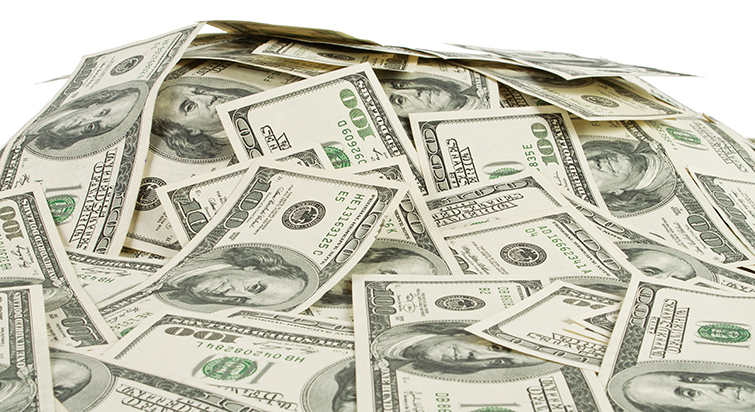Trump’s Tax Cuts vs. the Fed’s Interest Rate Hike and Balance-Sheet Reductions
- Caifu Magazine | by David Ren, Chairman of CAIFU Magazine
- EN
One recent big news story showing some impact in the financial world is U.S. President Donald Trump’s tax reform plan to cut personal and business tax rates – not only for the wealthy and

big corporations, but also for the salary-earning working class. Tax deduction is a major move of Trump to revive the U.S. economy, which invites serious consideration for all of us to evaluate its effect on economy in the United States and around the world.
Tax deduction can always make people smile. But what if you cannot reduce the cost of the government after a tax cut? What’s going to make up for the deficit? Trump’s bold plan was based on two assumptions – one includes attracting overseas U.S. companies returning to the United States, especially manufacturing companies. The other is attracting overseas money back to the United States, especially money belonging to the multinational corporations but is kept outside of the country, while attracting the money from other countries flowing into United States.
The most important point here is to bring back the manufacturing industry. This will bring not only tax revenue, but also employment opportunities, which Trump promised during his election campaign. However, will tax reduction actually bring back enough businesses to the U.S. homeland?
Let’s take Apple for example. What are the reasons Apple decided to make its iPhones in Zhengzhou, China instead of in the United States? Besides the obvious factor of lower wage levels in China, there are 300,000 skilled workers in Zhengzhou. Another reason is that most of Apple’s suppliers are in Asia. The last reason: Apple is facing fierce competition.
On the other hand, it is impossible to find 300,000 skilled workers in any given U.S. city, and it is hardly possible to find suppliers for Apple in all of North America. Globalization has brought about the best resource allocation efficiency and could maximize the competitiveness of a company. It is a hard decision to make if one to compromise its own competitiveness in the face of intense competition.
As for the projected flowing-back of overseas money to the United States, it is still hard to say how much attraction Trump’s tax cut can generate. We all know that many multi-national corporations registered their business in Caribbean tax havens. And there’s even more uncertainty regarding the inflowing of either Chinese or other countries’ money.
We are still waiting to see whether Trump’s tax deduction plan could hit the mark. Let’s assume the plan’s effectiveness. But it still may take some time for businesses and money inflowing to return to the United States, which is especially true for the manufacturing industry. Even in the most optimistic case, the tax revenue decrease caused by the tax cuts still could not be offset in a short time. Financial constraints may come in the United States in the next couple of years, let alone to say that more pessimistic factors exist and could not be ignored.
Now that there is bound to be financial strains in years to come, the Fed’s decision for interest rate hikes and balance-sheet reduction are only good for boosting confidence in the dollar. When people realize the United States is going to face fiscal difficulties, then there is less motivation for money to return to the United States. Only when people believe the dollar is going strong, then they will buy in dollars.
If Trump’s tax cut succeeds, then China will inevitably make adjustments accordingly. How? I think if China’s overall tax level does not decrease – the same reason as the United States – then it cannot reduce its spending.
The potential for China to reduce its business tax lies in its structural adjustment, namely to cut its corporate income tax and value-added tax. At the same time, it should increase property tax and taxes on luxuries. It should heavily tax those speculating on real estate and those luxury shopaholics, so as to alleviate the tax for its own manufacturing industry, and alleviate the tax for modest individual consumers.















